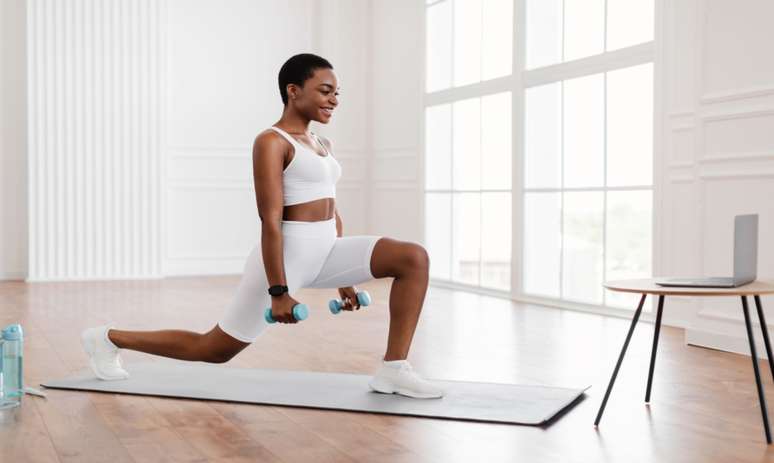Even with a routine of running, it is possible to take care of the body and health. See 4 exercises to practice pilates at home
Pilates is a practice that brings benefits that go far beyond the improvement of physical fitness. This is because the method requires that the mind and body are in tune, which helps to increase the ability and concentration of the body.
In addition, respiratory movements help to fight stress and anxiety, which is extremely important, especially for those who live a frenetic and stressful routine.
For those who spend a lot of time sitting, Pilates can be even more advantageous. According to Professor Josi Araújo, by Pure Pilates, “the body must balance muscle functions to remain active and aligned, preventing possible pain and injuries through repetitive efforts”.
How to include pilates in the routine
But how to reconcile the Pilates practice with a fresh and short time routine? Josi underlines that it is important to take care of health at any time of the day, on the way home, at lunchtime or before going to work.
“As many professions require to work sitting, the body does not receive metabolic stimuli and therefore the sedentary lifestyle becomes reality.” To get good results, the recommendation is that the pilates will be practiced from 2 to 3 times a week.
The practice combines controlled respiratory movements, which help to reduce the production of stress hormones and increase the production of well -being such as endorphin.
Some exercises indicated by the teacher include diaphragmatic breathing, lengthening of the rear muscles of the thigh, cat exercise and spine bearing on the wall. Check:
Exercise 1: breathing and diaphragm
Diaphragmatic breathing is a deep technique that helps reduce stress and anxiety. We have to take a break to take a moment to relax. This is because it is scientifically shown that this interval becomes efficient to preserve, promote and restore health.
It all starts with breathing and it is through it that we connect the body and mind, so this exercise is extremely necessary to follow others.
Starting position: Sitting with backs and straight hands supported on the lower rib.
Execution: It deeply inspires by the nose, filling the abdomen and expanding the ribs. Then download slowly through the mouth, gently contracting the abdomen and ribs, focusing on slow and deep breathing.
Repeats: From 8 to 10 times.
Exercise 2: lengthening of the knee tendon
Starting position: In the supine decubitus, with one extended leg and the other flex to maintain the lower part of the back on the ground and comfortably.
Execution: Place an elastic band or a towel that moves the foot, pulling towards the face, breathe deeply and, when expanding, slowly extend the high knee towards the ceiling.
Repeats: From 8 to 10 times, remembering to always respect the limit of your body.
Exercise 3: cat exercise
Starting position: Four supports or cat.
Execution: In the correct position, it inspires. Output, bring the spine to the ceiling, making an arch as a goose skin. At this point the head must follow the movement and your appearance should be directed to the center of the legs. Upon returning, imagine taking away the isquases (as if to joke the butt) and look forward. Expire and resume the movement
Repeats: From 8 to 10 times.
Exercise 4: column bearing on the wall
Starting position: Standing
Execution: Touch the head and spine on the wall, note which points are supported and which points in the spine are without support. Leave your arms along the body. Inhale, the deadline rolls the head and the spine towards the floor. Let the arms weigh like a pendulum. In the next exhalation, try to activate the abdomen and climb the rotating vertebra of the spine from the vertebra on the wall, be aware of the last time.
Repeats: From 8 to 10 times.
Source: Terra
Ben Stock is a lifestyle journalist and author at Gossipify. He writes about topics such as health, wellness, travel, food and home decor. He provides practical advice and inspiration to improve well-being, keeps readers up to date with latest lifestyle news and trends, known for his engaging writing style, in-depth analysis and unique perspectives.


-1je9vk8ji8pr9.jpg)





